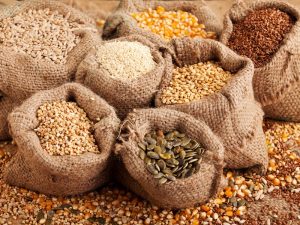
Seed is the true carrier of technology. In India, three sets of institutions produce seeds:research institutions and agricultural universities; public sector seed producing corporations; andprivate sector firms including multinationals. The last decade has seen two main developmentsin seed market. One, production of quality seed has risen at a rapid rate after 2005-06. And two,public sector has begun to effectively compete with the private sector.
Beginning with 2001-02, there has been a distinct change in the role of public sector inthe development of hybrid in all crops.While these changes have led to better availability of quality seed, seed replacement rate(percentage of area sown using certified quality seeds other than the farm saved seeds from theprevious crop) remains low in the country. On average, it is below 20 per cent in pulses and
below 30 per cent in paddy and wheat. Even now many farmers do not distinguish betweencommon grain and seed and use common grain as seed.3 Recent data on breeder seed productionindicated a drastic reduction of about 40% compared 2010-11. This is likely to impact thecertified seed availability in coming years. Another serious factor responsible for low use ofquality seed is sale of spurious seed in the market. In order to raise productivity there is a need tosupply and promote use of quality seed and also assure quality.
Some important initiatives have been taken under the recently amended New Policy onSeed Development. The policy permits 100 per cent foreign direct investment under theautomatic route and simplifies the procedure for inclusion of new varieties in the Organisationfor Economic Cooperation and Development Seeds Scheme. The thrust is also on creating a seedbank. Since 2013-14, a Seed Rolling Plan has been in place for all the States for identification ofgood seed varieties and agencies responsible for production of seeds.
Several steps need to be taken to improve the quality of seeds used by farmers:
Sometimes prices of good quality seeds, especially hybrids, are high and farmersare unable to afford them. Creating community Seed Banks in producing areascan reduce dependence on market for seeds. The seed banks not only protect theexisting crop varieties but also ensure supply of seeds to the farmer to meetcontingency.
Proper storage of seeds is essential to get satisfactory germination. This factorassumes particular significance in the eastern region due to humid climaticconditions. Adequate-quality
